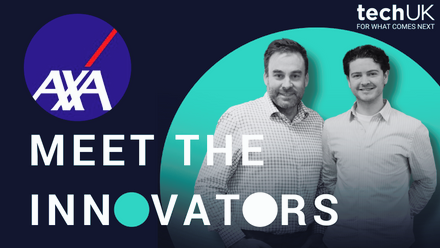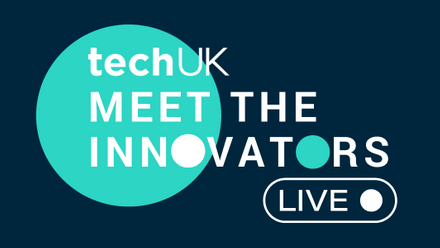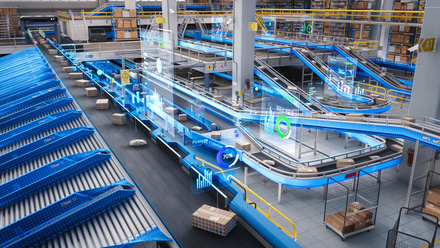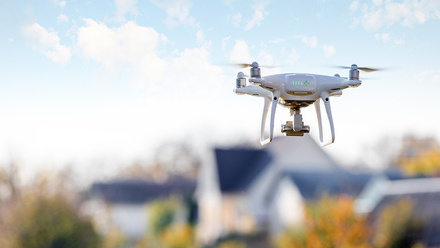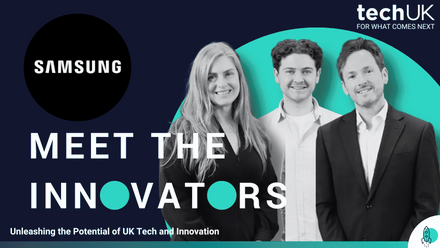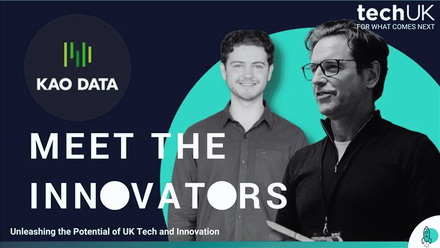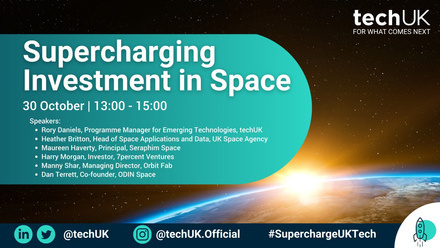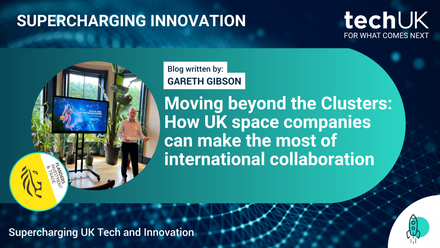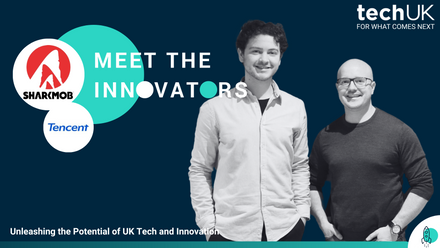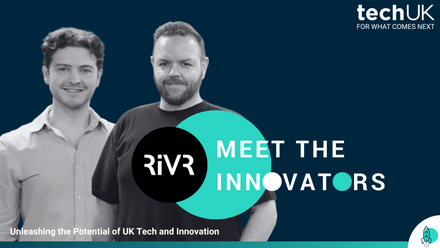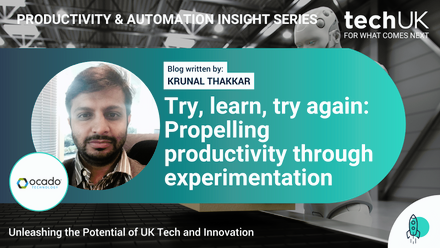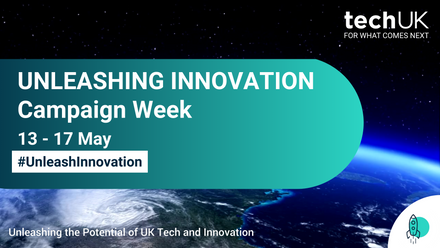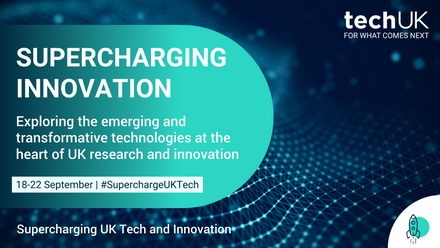From apps to actuators: How the UK could lead on humanoid robots
This article has been published during Humanoids Summit London, an event that unites visionaries, innovators, and industry leaders to explore the future of humanoid robotics in Europe.
The race to develop the world’s first useful general-purpose robot is already underway. In case you’re wondering whether to expect more C-3PO from Star Wars or Bender from Futurama. this is yet to be determined. That said, it is possible to make some informed predictions.
Prediction one: The rise of general-purpose machines
The early adopters of humanoid robots will likely be in sectors and industries in which the barriers to adoption are lowest and the potential benefits are greatest. A good example is social care with its labour shortages, ever-growing levels of demand stemming from an ageing population, and relatively structured (and therefore predictable) environments.
Over time, advances in AI models and robotic hardware such as sensors, actuators and batteries will see humanoids become increasingly adept at an ever wider set of tasks. This versatility will set them apart from today’s “smart machines” such as GPS-guided tractors or AI-enabled fridges, which while connected or autonomous are rarely able to adapt to a wide range of tasks, scenarios and environments.
This is the promise of humanoid robots: general purpose machines that fit seamlessly within a world designed for the human figure – be that factories, shops or homes – and offer new solutions to pervasive challenges such as low productivity, labour market shortages, and the existence of dull, dirty or dangerous tasks.
Prediction two: Apps become physical
While this prediction may take longer to realise, it has the potential to be equally transformative.
Much like the smartphone, each humanoid will serve as a single technological system (or platform) through which a multitude of tasks and objectives can be achieved.
Just as the smartphone has digitised countless physical products, from calculators and calendars to cameras and compasses, so too will humanoids, albeit now in the form of physical processes (actions and outputs).
This is the emerging world of ‘physical intelligence’ in which the equivalent of an ‘app’ could become the ability to complete a real-world task (or set of tasks). In the future, it’s expected that hardware will take the form of actuators and limbs (rather than a hand-held screen) and ‘users’ will be those that are receiving (and hopefully benefitting from) the humanoid’s services.
Over time, and provided advances in real-world and virtual (or ‘simulated’) training continue, these abilities could span an increasingly wider range of ever more complex physical processes. Much like the world waited until the iPhone 5 for an 8MP camera, it may not be until a future model or operating system that the right hardware and software are in place to enable some of the platform’s most transformative applications. The UK could look to develop many of these applications in the future.
In addition to their general purpose and ever-expanding abilities, humanoids will likely be composed of lightweight materials, powered by not-yet invented batteries, brought to life by state-of-the-art AI models, and predominantly assembled by former or diversification-seeking automobile manufacturers (and, increasingly, by humanoids themselves).
Britian’s bot blind spot
So, where is the UK in all this, you may ask. The simple answer is that we’re not. Well, not really.
At present, only two countries – the US and China – have taken considerable steps to lead on the development and deployment of humanoid technologies.
China has long recognised the importance of robotics, identifying such technologies as critical to its Made in China 2025 strategy and subsequently announcing its intention to mass-produce humanoids by 2025 and ensure by 2027 that these are an important driver of economic growth. Following the success of Beijing’s inaugural humanoid half-marathon in April, China is now planning to launch a 1 trillion yuan ($137 billion) fund to support AI & robotics start-ups.
The US has taken a different approach, driving progress in technology development predominantly through privately-held companies such as Tesla, Figure AI and Boston Dynamics.
At present, virtually all the world’s largest humanoid companies are located in the US and China, with six of the 11 domestic humanoid robot manufacturers in China planning to produce more than a thousand units this year.
Despite the seemingly unassailable lead of these two countries, the UK has significant areas of strength in humanoid technologies. These include world-leading academic research into humanoids; deep expertise in AI, safety and ethics, professional services, and advanced manufacturing; plus a strong offer of support in the form of organisations such as The National Robotarium (the UK’s centre for robotics & AI) and the Advanced Research + Invention Agency (ARIA) with its £57 million robot dexterity programme. In addition, the UK Government has begun to explore the topic, as evidenced by the Government Office for Science’s Rapid Technology Assessment on humanoids. Published in March 2025, this is intended to upskill UK policymakers on recent developments, opportunities and challenges.
While the UK has many of the components required for the development of a future humanoid sector, as things stand it appears that our capabilities are currently too few, dispersed, and uncoordinated to result in any significant form of global leadership at this time. The UK may hold many of the cards, however it’s yet to fully enter the game.
Going from lagging to leading
Perhaps now is the time for the UK to evaluate, coordinate, and enhance its humanoid capabilities. But how could this look?
Doing so would involve mobilising relevant sectors and industries including AI, robotics, digital ethics and advanced manufacturing; facilitating frank discussions about the challenges and opportunities ahead; then most likely setting in motion the UK’s first Humanoids Strategy.
Such a Strategy could chart both the landscape and the road ahead by mapping the UK’s current humanoid ecosystem, identifying our main areas of comparative advantage, allocating significant resources towards enhancing key capabilities, and setting out a vision for what we want our humanoid sector to look like in the decades to come (and why).
Its success would require strong political leadership and vocal champions from Government, industry, academia, and beyond; the convening of ethicists and engineers, researchers and regulators to ask, appraise and address fundamental questions; a desire to look to other regions and ecosystems for inspiration and proven models; a commitment to significant investment in facilities, accelerators and clusters; and the introduction of things like specialised academic and vocational qualifications.
Equally as important as capability is capacity. One model the UK could emulate is the VC’s approach to scaling innovation. This would involve launching then backing a portfolio of ‘big bets’ aligned with core capabilities and comparative advantages, quantifying and tracking progress, and seeking to create new markets and dominate others. Think ARIA but solely for robotics and AI.
Such actions would enable the UK to not just participate or compete but capture significant value in the global humanoid marketplace. The value of this market is predicted to develop at an exponential rate, with estimates ranging from $38 billion by 2035 (Goldman Sachs) to an astounding $24 trillion (Ark Invest).
Over the coming months, techUK will be exploring how the UK can do just this by convening key stakeholders, identifying then addressing major challenges and opportunities, promoting examples of best practice, and sharing policy recommendations with UK Government to turn the UK’s strengths into global leadership.
The race is on
The metallic heart of the matter is this: While the global humanoid race, of which we are all now contestants, may be unique or unprecedented for countless reasons, it will inevitably end the way every race does. With three standing on the podium and the rest in the crowd watching on.
The US and China have already secured their positions on the podium. The question is: who will join them?
And let’s be clear: this is not simply a question of technological glory or defeat. Of a shiny medal or four more years of intense training and preparation. This is as fundamental as it comes: humanoid robots will likely represent a new technology platform – reminiscent of the Personal Computer, Internet or smartphone – upon which a universe of applications, products and services will be conceived, deployed and scaled.
As the US and China bolt off the start line, eyes fixated on the chequered flag waving in the wind ahead, Europe and the rest of the world’s innovation-driven economies risk being left standing in the dust.
This could be the UK’s chance to propel ourselves one step ahead of the rest and commit to owning a key part of one of the next global technological platforms - it’s that fundamental.
We should grasp this opportunity with both end effectors.
👋 Get in touch!
Rory Daniels
Senior Programme Manager, Emerging Technologies
Please contact [email protected] to enquire about techUK membership or get involved in techUK’s AI, robotics and humanoids activity.
You can also find Rory on LinkedIn, where he regularly posts about emerging tech, here.
🔗 Related activity
This insight is part of techUK's six-month Robotics & Automation sprint campaign.
This will identify the key Robotics & Automation technologies of the future, explore how they'll be developed, applied and commercialised, and make recommendations regarding how the UK can lead on them moving forward.
The campaign features panel discussions, workshops, roundtables, networking sessions, blogs/vlogs, tech demos, and a report containing member case studies & policy recommendations.
techUK – Unleashing UK Tech and Innovation
The UK is home to emerging technologies that have the power to revolutionise entire industries. From quantum to semiconductors; from gaming to the New Space Economy, they all have the unique opportunity to help prepare for what comes next.
techUK members lead the development of these technologies. Together we are working with Government and other stakeholders to address tech innovation priorities and build an innovation ecosystem that will benefit people, society, economy and the planet - and unleash the UK as a global leader in tech and innovation.
For more information, or to get in touch, please visit our Innovation Hub and click ‘contact us’.
Latest news and insights
Other forms of content
Sprint Campaigns
techUK's sprint campaigns explore how emerging and transformative technologies are developed, applied and commercialised across the UK's innovation ecosystem.
Activity includes workshops, roundtables, panel discussions, networking sessions, Summits, and flagship reports (setting out recommendations for Government and industry).
Each campaign runs for 4-6 months and features regular collaborations with programmes across techUK.
techUK's latest sprint campaign is on Robotics & Automation technologies. Find out how to get involved by clicking here.
Running from September to December 2023, this sprint campaign explored how the UK can lead on the development, application and commercialisation of space technologies, bring more non-space companies into the sector, and ultimately realise the benefits of the New Space Economy.
These technologies include AI, quantum, lasers, robotics & automation, advanced propulsion and materials, and semiconductors.
Activity has taken the form of roundtables, panel discussions, networking sessions, Summits, thought leadership pieces, policy recommendations, and a report. The report, containing member case studies and policy recommendations, was launched in March 2024 at Satellite Applications Catapult's Harwell campus.
Get in touch below to find out more about techUK's ongoing work in this area.
Event round-ups
Report
Insights
Get in touch
Running from January to May 2024, this sprint campaign explored how the UK can lead on the development, application and commercialisation of the technologies set to underpin the Gaming & Esports sector of the future.
These include AI, augmented / virtual / mixed / extended reality, haptics, cloud & edge computing, semiconductors, and advanced connectivity (5/6G).
Activity took the form of roundtables, panel discussions, networking sessions, Summits, and thought leadership pieces. A report featuring member case studies and policy recommendations was launched at The National Videogame Museum in November 2024.
Get in touch below to find out more about techUK's future plans in this space.
Report
Event round-ups
Insights
Get in touch
Running from July to December 2024, this sprint campaign explored how the UK can lead on the development, application and commercialisation of web3 and immersive technologies.
These include blockchain, smart contracts, digital assets, augmented / virtual / mixed / extended reality, spatial computing, haptics and holograms.
Activity took the form of roundtables, workshops, panel discussions, networking sessions, tech demos, Summits, thought leadership pieces, policy recommendations, and a report (to be launched in 2025).
Get in touch below to find out more about techUK's future plans in this space.
Event round-ups
Insights
Get in touch
Running from February to June 2025, this sprint campaign is exploring how the UK can lead on the development, application and commercialisation of robotic & automation technologies.
These include autonomous vehicles, drones, humanoids, and applications across industry & manufacturing, defence, transport & mobility, logistics, and more.
Activity is taking the form of roundtables, workshops, panel discussions, networking sessions, tech demos, Summits, thought leadership pieces, policy recommendations, and a report (to be launched in Q4 2025).
Get in touch below to get involved or find out more about techUK's future plans in this space.
Upcoming events
Insights
Event round-ups
Get in touch
Campaign Weeks
Our annual Campaign Weeks enable techUK members to explore how the UK can lead on the development and application of emerging and transformative technologies.
Members do this by contributing blogs or vlogs, speaking at events, and highlighting examples of best practice within the UK's tech sector.








